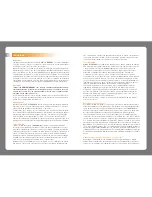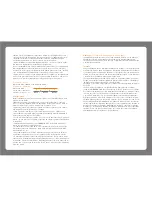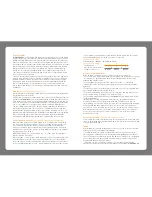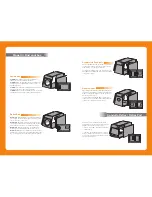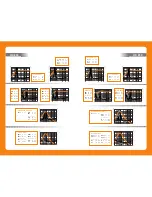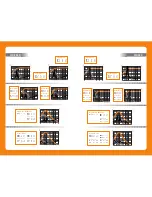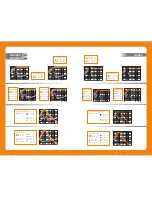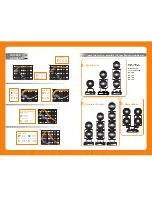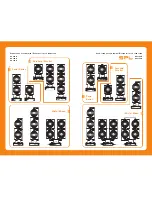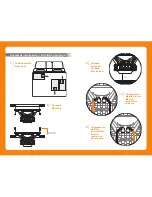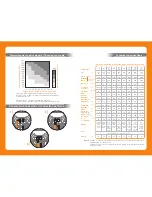
Technology HXS
HI-ENERGY HXS
’s are very high SPL subwoofers, with double voice coil and double
magnet, designed in order to build competition systems with bursting pressure and
thrilling musicality.
HXS
subwoofers represent utmost technology in the field of low
frequency reproduction. Every component was designed and developed in order to
get speakers able to provide extraordinary sound pressure levels, dissipate very high
powers and offer excellent sound, in whatever systems.
HXS
subwoofers use SVC
(Square Voice Coil), a new conception solution which optimises thermal capacity
thanks to a very compact and light winding. The cooling circuit, perfectioned in
order to have constant air flux inside the gap, keeps voice coil temperature stable
even in case of SPL overdriving.
Thanks to their very linear mechanic excursion, these speakers can reach high sound
pressure levels even when they are installed in small boxes. The choice of glues and
materials suitable to extreme uses makes them the ideal components for very high
SPL systems, while their excellently balanced electroacoustic parameters allow the
selection of different types of configurations, both in sealed and in vented boxes.
Power, appeal and design for cosmetically, acoustically impressive state-of-the-art
installations.
Find your box
(see page Find your box)
We recommend six configurations for
HX
subwoofers, with different size requirements,
complexity and acoustic results.
All projects were optimised considering the use of a panel of absorbing material, like
AZ audiocomp FONOFORM, onto all internal walls, both in sealed and reflex enclosures.
If you want to create a bass section by using several speakers, we recommend you
to use the same subwoofer model and the same type of box. Build some equal boxes,
one for every subwoofer, or design a single structure divided in different boxes.
The use of
HXS
subwoofers in “SPL Extreme” systems demands the knowledge of
bass loading techniques and of acoustics in car compartments. Every competition
system must be properly designed for the vehicle it will be installed in; therefore, it is
impossible to provide standard projects for this type of use.
HXS
subwoofers can perform
at best even in high SPL systems. For these systems, we suggest six traditional
configurations, with different size requirements, complexity and acoustic results.
Connecting your subwoofer
(see page Connecting your subwoofer)
HX
series offers single voice coil and double voice coil subwoofers. This permits
you to have a more flexible subwoofer section, to change the way speakers are
connected and their number, in order to make load suitable to the amplifier.
Usually, car amplifiers power output increases when load decreases. Among the
manufacturer’s specifications, please check the minimum impedance the amplifier
accepts and don’t go below it.
HXS
subwoofers have 2 + 2 ohm double voice coil. Thus, mind the impedance
generated by the connection.
When using two or more speakers in the subwoofer section, it is extremely important
to employ drivers of the same type (model and number of voice coils), installed
in the same type of box. We herewith show different combinations of connection in
series, in parallel and mixed (in series - in parallel), which meet most needs in terms
of load impedance and maximum sound pressure. Below, please find the formulas
for calculating impedance according to the type of connection.
Connections in series
Total impedance =
Ω
Sub 1
+
Ω
Sub 2
+
Ω
Sub 3
…
Connections in parallel
Total impedance =
Practical recommendations
When building your subwoofer box, you’d better care for some details:
•
You need to get a perfect match between the speaker and the box it has to be put
into; always use a gasket between basket and mounting surface, fasten screws
gradually and simultaneously.
•
Use the rubber inserts given with the subwoofer in order to cosmetically
complete the screws housing after fastening them. See page Installation patterns -
Mounting.
•
The box panels must be perfectly glued and sealed; use a lot of good quality vynil
glue, evenly distributed onto touching surfaces.
•
To prevent all breathing, you can put a paste of vynil glue and saw dust (the one
you get while working, for instance) onto all internal joints.
•
Use damping materials, like AZ audiocomp FONOMAT, onto internal walls in order
to eliminate vibrations.
•
Build your box of rigid, anti-vibration material not to compromise the project
acoustic performances: use high-density wood, MDF, multilayer sea wood, etc.
•
After finishing your reflex box, please test it into your car compartment by changing
the port length and, thus, frequency, or the quantity of sound-proof material in
the enclosure. This is the only way to be sure you get the acoustic results you want.
By making the port shorter or decreasing the quantity of sound-proof material,
you increase frequency and get clearer, crisper bass; vice versa, bass will be
deeper but less sharp.
Choosing your cable
(see page: Choosing your cable)
Power cables are extremely important since they directly affect the system damping
factor; in the enclosed table, we show cable diameters, which we recommend according
to length and applied power.
Tuning
After finishing your box and installing it into your car, you need to spend some time
to tune your system and calibrate your amplifier:
•
The amplifier gain level should be adjusted in order to keep power in a linear
functioning area, without distorsions or saturation that might damage the speaker.
•
Cut-off frequency should be between 80 and 50 Hz, according to the configuration
you use (direct emission like Sealed Box and Reflex Box or indirect emission like
Asymmetric Bandpass or Double Reflex).
•
If possible, use subsonic filter by setting its cut-off frequency around 25 Hz.
•
Avoid to use loudness or equalisers at low frequencies (<150 Hz):
HI-ENERGY HX
where “
Ω
Sub” is the impedance
of Subwoofer number 1 etc. …
1
1
Ω
Sub 1
1
Ω
Sub 2
1
Ω
Sub 3
…
…


